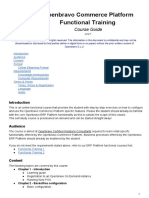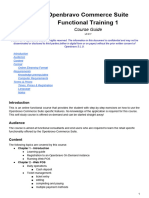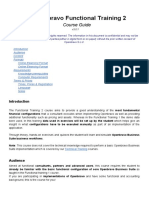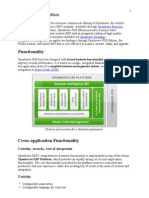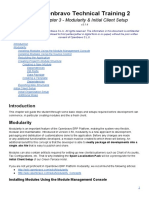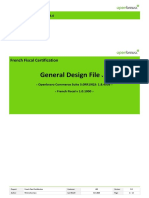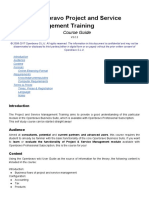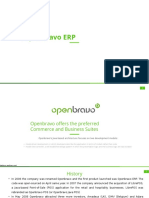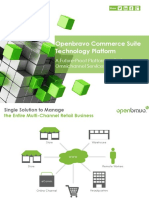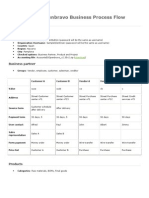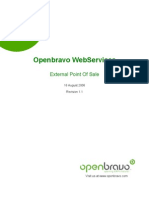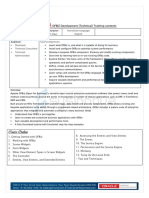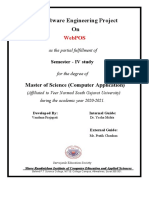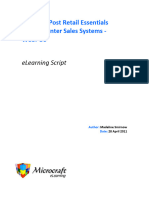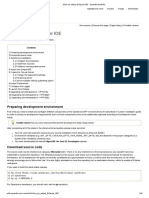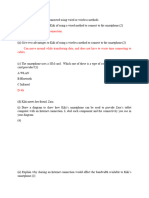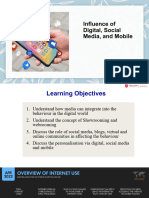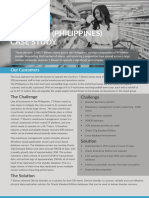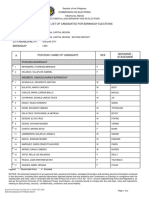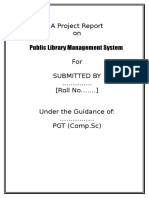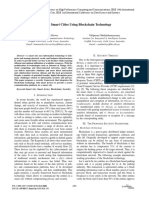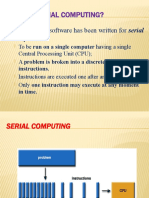Openbravo Commerce Suite
Technical Training Course Guide
v2.0.0
© 2016 Openbravo S.L.U. All rights reserved. The information in this document is confidential and may not be
disseminated or disclosed to third parties (either in digital form or on paper) without the prior written consent of
Openbravo S.L.U.
Introduction
Audience
Content
Session 1 - Development Environment Setup and debugging code
Session 2 - Adding Buttons and Dialogs
Session 3 - Loading and Displaying Additional Information
Session 4 - Adding Business Logic Through Hooks
Session 5 - Adding New Payment Types
Session 6 - Adding a New Type of Discount
Session 7 - How the Hardware Manager Works
Session 8 - Integrating with New Payment Gateways
Session 9 - Data Synchronization Process
Format
Online Elearning Format
Requirements
Knowledge prerequisites
Computer Requirements
Terms & Prices
Times, Prices & Registration
Language
Notes
Introduction
The Technical Training POS provides the following two pillars of knowledge:
1. How to customize and extend the WebPOS
2. How to customize and extend the retail industry specific parts of the Openbravo Business Suite
Audience
This self-study course is targeted at Openbravo Certified Developers that:
● are already experts in Openbravo Business Suite development
AND
● have a strong background in J ava and Javascript
The materials of this course assume the student is already familiar with the above and do not provide
instructions on those. If you do not meet the requirements stated above, refer to our Business Suite
technical courses first:
1. Technical Training 1
1
�Content
Session 1 - Development Environment Setup and debugging code
This first chapter instructs the student on how to prepare a development environment where Commerce
Suite specific customizations will be done:
● Setting up Eclipse Development Environment
● Installing Commerce Suite Modules
● Creating a Custom Development Module
● Debugging Java Code with Eclipse
● Debugging JS Code with Developers Tool of Chrome
Session 2 - Adding Buttons and Dialogs
Customization and extensions usually start by adding new buttons and messages to the existing screens:
● Creating a simple new button
● Referencing and display core ticket information in a custom dialog
Session 3 - Loading and Displaying Additional Information
This chapter teaches the student on how to extend the data model to contain and display custom additional
information:
● Extending the model within the Business Suite backend and the WebPOS frontend
● Showing custom information in the Frontend
Session 4 - Adding Business Logic Through Hooks
Changing business logic of an application in a modular way can often be challenging. The following
mechanism allow the developer to do so within the Openbravo Commerce Suite and Business Suite:
● Injecting custom business logic
● Client side hooks
● Server side hooks
● Custom popup dialogs
Session 5 - Adding New Payment Types
Being able to choose a particular payment type in Web POS is an action that requires authorization. This
chapter explains how a new payment type is added in the Business Suite backend and how WebPOS users
are granted authorization to use them.
Session 6 - Adding a New Type of Discount
This chapter demonstrates how new types of discounts can be added and used within the Web POS:
● Using and extending the Discounts and Promotions module
● Implementing a new promotion: first two items for free
● Extending the frontend and the backend logic to support the new promotion
Session 7 - How the Hardware Manager Works
The Web POS application is the store-level user interface optimized for touch and mobile devices. It is light,
fast and user friendly. It is multiplatform and only requires a web browser to run.
To use peripherals like printers, customer displays and others from the Web POS browser application, the
so-called Hardware Manager (HWM) is required which acts as a gateway between the Web POS and these
peripheral devices.
It is a standalone native Java application that is capable of managing POS hardware devices once it has
been properly configured which is explained in this chapter.
Session 8 - Integrating with New Payment Gateways
This chapter explains how the Web POS can be integrated with a new payment provider/gateway:
● Registering new payment providers
2
� ● Tying payment providers to payment methods
● Using the HW Manager as a proxy
Session 9 - Data Synchronization Process
This chapter explains how the data are synced in the back office, using the Import Entry Manager
Infrastructure:
● Client side
● Server Side
○ Import Entry PreProcessor
○ Import Entry Manager Thread
○ Import Entry Processor
○ Import Entry Processor Runnable
Format
Online Elearning Format
The format of the Openbravo Commerce Technical Training is a hybrid between pure self-study and
instructor led trainings, providing the student with a strong learning experience. Here are some of the
highlights:
● the training can be enrolled to at any time and started straight away
● course access to the online e-learning platform is granted for a period 30 days from the start of the
enrolment
● all documentation, exercises, checkpoints and interaction is provided by the Openbravo University
e-learning platform
● 30 hours of student’s time is estimated to be required by the student to complete the course
(depending on student’s background and skills)
● support is offered through 2nd level support portal (for partners) or an integrated course forum (for 3rd
parties)
● exercises should be executed in a l ocal development environment
Requirements
Knowledge prerequisites
● Openbravo Certified Developer title
● excellent senior knowledge of Java
● excellent senior knowledge of Javascript
Computer Requirements
● dual core processor (2GHz or faster)
● 8Gb RAM or more
● A compatible web browser. Due to the fact that Openbravo 3 is a rich-internet-application and the
WebPOS offers offline functionality, only Webkit based browsers are supported:
○ Google Chrome
○ Apple Safari
Terms & Prices
Times, Prices & Registration
The course can be enrolled and started at any point in time. Registration can be done through the following
link http://www.openbravo.com/training .
Language
All training materials are available in English only. Support h
owever can also be provided in S
panish.
3
�Notes
● Training is based on Openbravo version 3.
● Prices are quoted per student and do not include taxes.
● This course is open to all participants, regardless of affiliation with Openbravo.
For detailed Terms and Conditions of Openbravo courseware delivery, please visit the following link:
http://university.openbravo.com/university-terms.html


